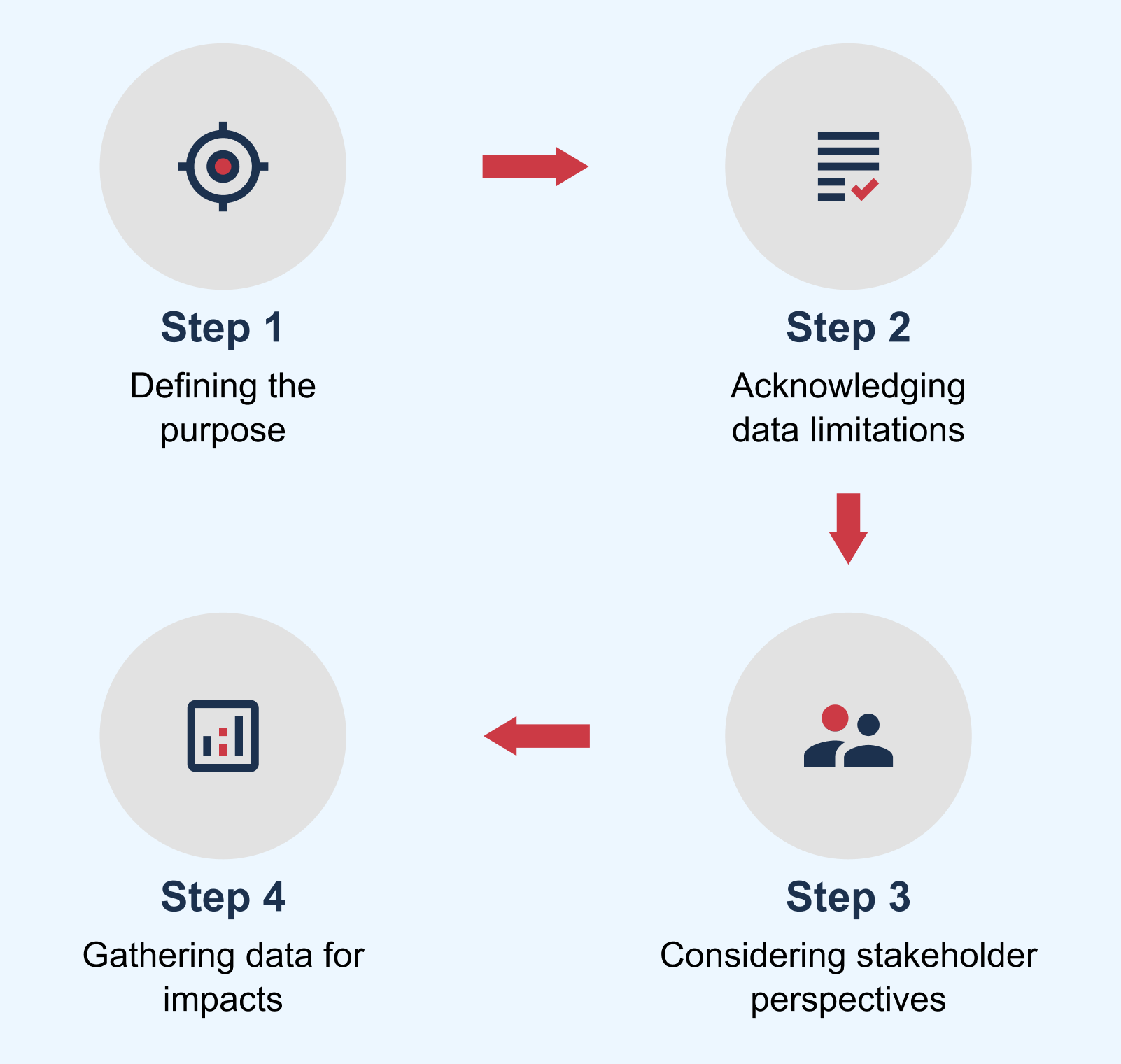What is Impact?
In their latest methodological paper, the International Foundation of Valuing Impacts (IFVI) and the Value Balancing Alliance (VBA) define impact “as a change in one or more dimensions of people’s well-being directly or through a change in the condition of the natural environment.”
Impact is about well-being and thus how people value things. These effects can be either direct or indirect, intended, or unintended, and can range from positive to negative. Measuring and understanding impacts are the essential first steps for organizations to positively influence their effects on individuals’ well-being and the environment.
Understanding Impact with the example of a school
In alignment with the definition above, the primary focus of Impact is the well-being of people in conjunction with their natural environment. This concept is best illustrated through a practical example, such as the construction of a school.
Intended Impacts
Building a school intends to advance education, which can be measured by factors such as literacy rates and educational attainment levels. Education has intrinsic value, but it also translates into higher chances in the labor market and, subsequently, increased future income. Higher income, in turn, positively impacts material well-being, housing quality, nutrition, and the overall health and life expectancy of individuals. Building schools, therefore, has a positive Impact on society’s health.
Additionally, there are other positive side effects, such as employment opportunities for teachers and supported jobs, which contribute to the local economy. In the European Union, the education sector accounts for approximately 5% of the total GDP, making it a significant economic factor.
Unintended negative Impacts
While building schools has various positive consequences, it is also crucial to acknowledge unintended negative Impacts. Factors like power consumption, material production, transportation, and daily commute to school result in emissions of greenhouse gases (GHG) like CO2 and methane. These emissions are major contributors to the climate crisis, leading to extreme weather events, disruptions in food supply, increased wildfires, and consequent health issues for people worldwide.
Why Impact matters
Understanding and managing Impact is paramount because it directly influences different stakeholders’ well-being. In the case of school construction, various interest groups are affected, each with distinct needs and interests. These stakeholders include students, construction owners, teachers, and the broader population Impacted by environmental consequences.
How to measure Impact?
Measuring Impact depends on the purpose, available data, and stakeholder perspective. Various metrics can be employed to assess Impact, but it often involves assumptions and estimations. Transparency in these assumptions is crucial for effective communication between decision-makers and stakeholders.

Dr. Richard Scholz
Head of Impact Analysis at WifOR
Measuring Impact is not just about numbers; it’s about the change created in people’s lives and the well-being of the environment. By measuring, and understanding Impact, we pave the way for a more sustainable future.
The Impact measurement and valuation journey
Measuring Impact is an ongoing process that involves not only assessing the well-being of different stakeholders but also engaging with them to validate assumptions and estimations. A robust approach might include multi-year surveys to confirm the accuracy of initial assumptions.
- Step 1: defining the purpose
Be clear about why you are measuring Impact, whether it is to make informed business decisions, achieve sustainable development goals, or determine the most Impactful investment.
- Step 2: acknowledging data limitations
Understand that perfect data may not be available, and estimations and assumptions will be necessary. Strive for continuous improvement in data quality.
- Step 3: considering stakeholder perspectives
Involve stakeholders in the measurement process to ensure transparency and to validate estimations and assumptions. Impact measurement is a collaborative effort.
- Step 4: gathering data for Impacts
Depending on the scope, purpose, and scale of the Impact assessment, data may need to be obtained from various sources, and it may not always be perfect. The key is to work with available data and validate it as much as possible.
Measuring Impact is a dynamic and multifaceted process that underpins our efforts to improve the well-being of individuals and the environment. It involves a holistic approach, collaboration with stakeholders, and transparency in data and assumptions. By following this journey, we can make better decisions, manage risks, and ultimately enhance our understanding of how our actions Impact society.
WifOR has been offering support in estimating Impact Valuation for more than ten years. WifOR’s sustainability research provides the foundation to effectively manage sustainable development and simultaneously address global challenges. Our research projects enable organizations and industries to focus on long-term targets, report non-financial performance based on valid data, and communicate sustainability progress with stakeholders throughout society.







